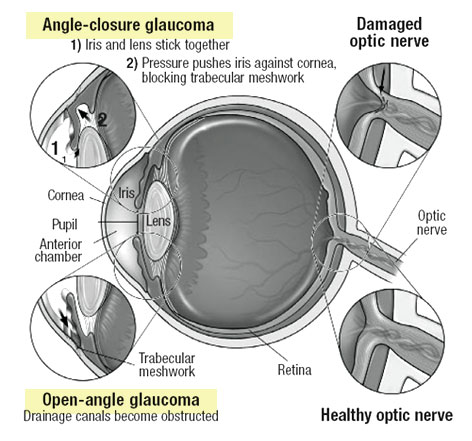Top Eyecare Near Me: Specialist Services for Optimum Eye Wellness
Understanding the Various Vision Adjustment Procedures Available for Clearer Sight
In the world of vision adjustment treatments, a wide variety of alternatives exist to resolve refractive mistakes and give people with clearer view. From the widely recognized LASIK surgical treatment to much less invasive treatments like PRK and implantable lenses, the field of ophthalmology supplies an array of methods customized to suit different requirements and choices. Each procedure comes with its own set of factors to consider, benefits, and possible risks. Recognizing the nuances of these vision correction techniques is essential for making notified decisions concerning one's visual wellness. Allow's discover the intricacies of these procedures and dropped light on the path to accomplishing enhanced vision quality.
LASIK Surgery
LASIK surgery is an usual refractive procedure made use of to correct vision problems such as farsightedness, astigmatism, and nearsightedness - glaucoma service near me. This medical strategy, which stands for Laser-Assisted sitting Keratomileusis, aims to improve the cornea to enhance exactly how light is focused on the retina, inevitably improving vision clarity. Throughout the procedure, a slim flap is produced on the cornea, and a laser is utilized to remove specific amounts of cells to reshape it properly. This improving permits light to be properly focused onto the retina, remedying refractive mistakes.
One of the key benefits of LASIK surgical procedure is the quick enhancement in vision experienced by clients. Generally, LASIK surgery is a preferred choice for individuals looking for a long-term option for their vision issues.
PRK Procedure
While also a typical refractive treatment, the PRK (Photorefractive Keratectomy) strategy varies from LASIK surgical treatment in its strategy to fixing vision troubles. In PRK, instead of developing a flap on the cornea, the outer layer of the cornea, called the epithelium, is completely removed. This allows the laser to reshape the cornea to fix refractive mistakes such as farsightedness, nearsightedness, and astigmatism directly externally.

Despite the longer recuperation time, PRK can generate outstanding lead to vision renovation, making it a valuable choice for those that might not appropriate candidates for LASIK surgical procedure.
Implantable Lenses
In comparison to PRK where the cornea is reshaped straight, implantable lenses provide one more technique for dealing with vision by putting man-made lenses inside the eye. This treatment is specifically valuable for individuals with high levels of nearsightedness, astigmatism, or farsightedness who may not appropriate candidates for laser surgical procedures like LASIK or PRK.
Implantable lenses, additionally understood as phakic intraocular lenses, job by supplementing the eye's all-natural lens with a synthetic one. retina service near me. These lenses can be put before the all-natural lens (anterior chamber) or behind the iris and in front of the all-natural lens (posterior chamber) By readjusting the power and positioning of these lenses, ophthalmologists can successfully correct refractive mistakes and boost visual acuity
One advantage of implantable lenses is that they are exchangeable and detachable, giving flexibility for future modifications. As with any surgical treatment, there are risks involved, such over at this website as infection or cataract formation. People thinking about implantable lenses must seek advice from an eye treatment expert to identify the most ideal choice based upon their private requirements and eye health.
Corneal Rings
Corneal rings, likewise called intracorneal ring sectors, are little, clear devices put into the cornea to deal with vision distortions such as keratoconus. Keratoconus is a problem where the cornea thins and bulges outward, creating vision to end up being altered. The insertion of corneal rings assists to flatten the cornea, enhancing aesthetic acuity and reducing the irregular astigmatism brought on by keratoconus.
The treatment for placing corneal rings is minimally intrusive and reasonably quick, commonly done as an outpatient procedure. Throughout the surgical procedure, the ophthalmologist makes a tiny laceration in the cornea and inserts the rings at a particular deepness. Once in area, the rings assist to reshape the cornea, supplying a smoother surface area for light to get in the eye, which can result in clearer vision.
Corneal rings are considered a reversible treatment, as they can be eliminated or changed if needed. glaucoma service near me. While they may not completely remove the need for glasses or call lenses, corneal rings can substantially boost vision quality and overall aesthetic comfort for people with keratoconus or various other corneal abnormalities
Refractive Lens Exchange
Adhering to the modification of corneal abnormalities with procedures like corneal rings, another vision improvement technique that can deal with refractive errors is Refractive Lens Exchange (RLE) RLE is a surgical procedure that entails changing the eye's natural lens with a synthetic intraocular lens (IOL) to correct refractive mistakes such as nearsightedness, farsightedness, and presbyopia. This procedure is specifically advantageous for individuals that may not be appropriate candidates for This Site treatments like LASIK or PRK due to variables such as thin corneas or high refractive errors.

Final Thought
In conclusion, there are different vision correction treatments available to aid individuals achieve more clear view. LASIK surgical procedure, PRK treatment, implantable lenses, corneal rings, and refractive lens exchange are all options that can attend to various vision concerns.
In the world of vision correction treatments, a wide range of choices exist to deal with refractive errors and give people with clearer view.LASIK surgical procedure is a common refractive treatment used to deal with vision issues such as farsightedness, nearsightedness, and astigmatism.While also a common refractive procedure, the PRK (Photorefractive Keratectomy) technique differs from LASIK surgical treatment in its technique to correcting vision troubles.Complying with the modification of corneal abnormalities with treatments like corneal rings, blog here one more vision modification method that can address refractive errors is Refractive Lens Exchange (RLE) LASIK surgical treatment, PRK procedure, implantable lenses, corneal rings, and refractive lens exchange are all alternatives that can address different vision problems.